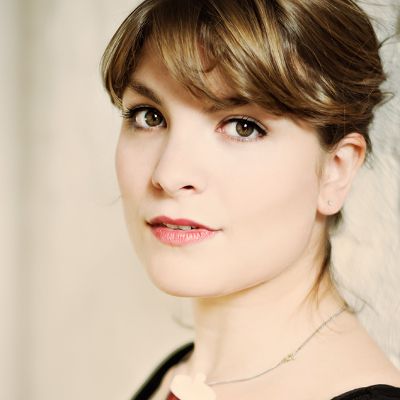Frans Brüggen led the Orchestra of the Eighteenth Century in what proved to be a monumental afternoon of music. Ever true to the spirit of its namesake, this ensemble has dedicated itself since 1981 to the practical execution of works from the Baroque era. This particular program showcased works spanning a 25-year range, from Bach’s Orchestral Suite no. 1 in C major to Rameau’s orchestral suite from Naïs.
Opening the concert with Bach’s “Ricercare a sei” (1747), taken from his Musical Offering, the arrangement by Wim ten Have for strings is surprisingly touching. The uniformity of using only strings (sans harpsichord) paves the way for delicate subtlety and a very intimate treatment of the main theme as it recurs in varying forms (new tonalities, inversions, etc.). Throughout the concert I was most moved by the generous yet sensitive weight of the contrabass section. Moving sometimes with the most blasé ease and at other times with a frantic sense of execution, the duo of Margaret Urquhart and Christian Staude made a powerful impression.
In their rendition of Bach’s First Orchestral Suite (1724), the orchestra created variations suited well to the French suite style yet maintaining a distinctly Germanic character. It’s always a treat to hear oboes blaring beautifully away at the back of the ensemble and, Frank de Bruine and Alayne Leslie paired with equal humor and delight to make the tonality of the triumphant C major ring throughout the entire hall.
Lest I get carried away with all the individuals in the orchestra, l must mention the exquisite violin concerti of Bach (BWV 1042 and 1041) offered by Giuliano Carmignola, Italy’s pride on the Baroque violin. Presenting these works with his distinguished air, Carmignola treated the second movement of each concerto with such grace that it was sometimes easy just to get lost in his sound, particularly in the treatment of the painful and sighing upper register.
Though they wrote at more or less the same time, the stylistic differences between the works of Bach and Rameau are striking, to say the least. During this time in history, the German school of composition was quite interested in the French annotation of ornamentation. Therefore, Rameau’s treatise Traité de l’harmonie (1722) was a highly regarded example of a musician/composer who wrote down his ideas for not only his fellow countrymen but also other courts in other lands.
The crowning jewel of the program was saved for last, with Rameau’s orchestral suite from Naïs (1748). Taking segments from the original opera by Rameau, the shift in style is evident by the instruments now taking the stage. Two traversos (each secretly concealing traverso piccolos in their suit pockets!), two trumpets, a musette, timpani and kettle drums are all included in this new sound world which was so common in France during the mid-18th century.
One refreshing aspect of seeing an operatic orchestral production on such an exposed stage is that the reactions of the musicians are now on full display. Of course, how can you not enjoy the bellowing winds of the musette and the rambunctious clamoring of the kettle drum so full of life? Without the dramatic staging and acting typical of an opera, seeing the orchestral suite brings an entirely new dimension to the work.
Finally, it is of tremendous importance to witness a concert led by one of the world’s most prominent and influential figures in the rebirth and reproduction of Baroque repertoire during the late-20th century, Mr. Frans Brüggen. Many are aware of Brüggen’s recorder playing, particularly from the 1970s, which contributed to the “revolution” in period performance practice. Nowadays he dedicates his efforts to concerts such as this one, enriching the knowledge and spirit of the orchestral music of the Baroque. The audience in Holland is keenly aware of this significance and gladly granted both Brüggen and his orchestra a standing ovation.


